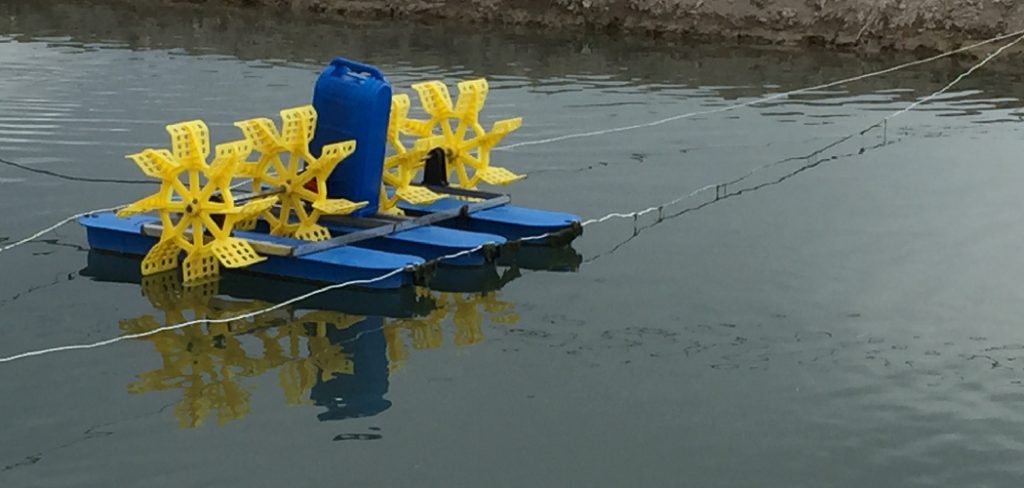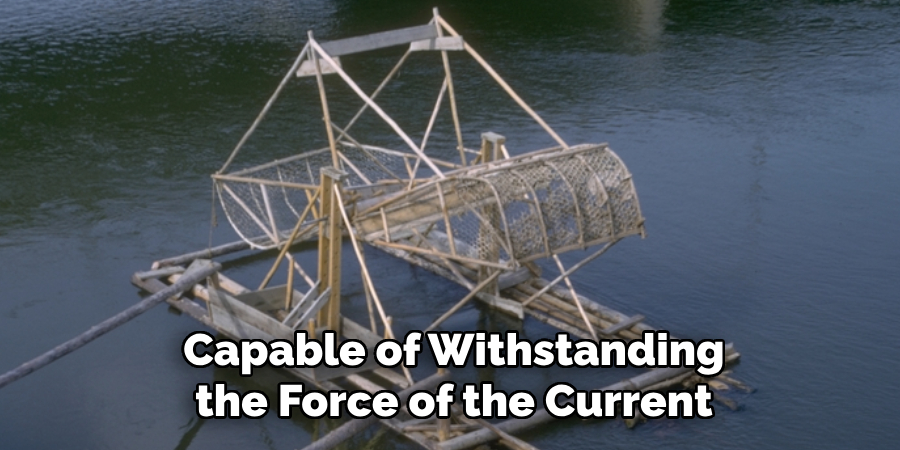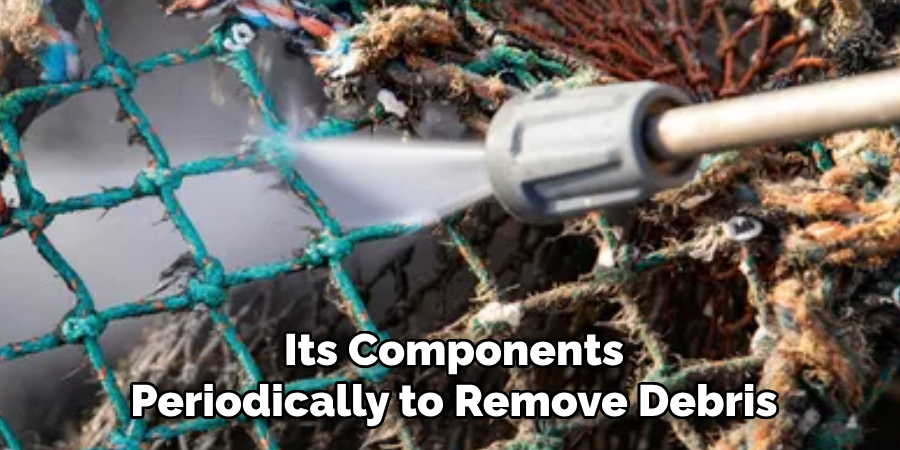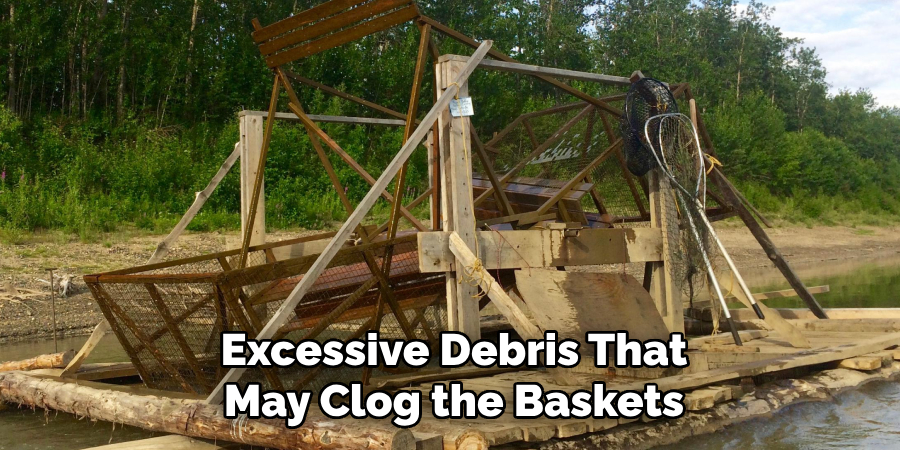Are you an avid fisherman or someone who loves the thrill of catching your food? Then you may have heard of a fish wheel.
Building a fish wheel can be an effective and sustainable way to harvest fish, especially in rivers with steady currents. A fish wheel uses the natural flow of water to catch fish without the need for constant monitoring efficiently.

This guide on how to build a fish wheel will provide step-by-step instructions on constructing a fish wheel, covering everything from gathering materials to ensuring it operates smoothly in the water. By following these instructions, you can create a functional fish wheel that minimizes effort while maximizing results, all while respecting environmental and legal considerations. Let’s get started!
What Are the Benefits of Building a Fish Wheel?
Before diving into building a fish wheel, it’s essential to understand why this method of fishing may be beneficial. Here are some key benefits:
- Efficient: As mentioned earlier, fish wheels use the natural water flow to catch fish without requiring constant monitoring. This efficiency means seeing more fish in less time makes your fishing trips more productive.
- Sustainable: Unlike other methods of fishing that can harm the ecosystem and deplete fish populations, fish wheels are considered environmentally friendly. They only catch certain species and sizes of fish, allowing smaller or protected fish to pass through unharmed.
- Cost-effective: Once built, a fish wheel can be used repeatedly with minimal maintenance, making it a cost-effective option for catching fish.
- Opportunity for Customization: Building your fish wheel allows you to customize the size and design to fit your needs and fishing location.
Once you understand the benefits of building a fish wheel, let’s move on to the step-by-step process.
What Will You Need?
- Plywood or other sturdy wood
- Metal rods or pipes
- Wire mesh or netting
- Spindles and bearings
- A paddle wheel or turbine
- Appropriate tools (e.g., saw, drill, screws)
It’s essential to gather all necessary materials before starting the construction process. This will ensure you have everything you need for a smooth building experience.
8 Easy Steps on How to Build a Fish Wheel
Step 1: Choose an Ideal Location
Selecting the right location is crucial for the effectiveness of your fish wheel. Begin by identifying a river or stream with a steady water flow, as the current will power the wheel’s rotation. Ideally, choose a location where fish are known to migrate, such as near fish runs or areas with high fish density. Pay attention to local regulations and environmental considerations to ensure that fishing in your chosen location is permitted and sustainable.

Additionally, look for a spot with easy access to the riverbank to install, monitor, and maintain your fish wheel. Avoid areas with excessive debris or turbulent water that could obstruct the wheel’s movement or cause damage. Taking the time to choose the best location will significantly improve your fish wheel’s efficiency and productivity.
Step 2: Gather Necessary Materials
Before constructing your fish wheel, gathering all the necessary materials and tools is essential. Common materials include sturdy wood or metal for the frame, durable mesh or netting for the fish-catching baskets, and a reliable axle for the rotational mechanism. You will also need bolts, screws, and waterproof adhesive to ensure a secure and weather-resistant assembly.
Tools such as a drill, saw, measuring tape, and wrench must also be prepared to facilitate the building process. Opt for high-quality materials that can withstand water exposure and environmental elements, as this will prolong the longevity and effectiveness of your fish wheel. Preparing all the required items in advance will help streamline the construction process and minimize interruptions.
Step 3: Construct the Frame
Start by constructing the frame of your fish wheel, as this forms the structure’s foundation. Measure and cut the wood or metal according to the desired dimensions of your frame, ensuring it is both sturdy and appropriately sized for the body of water in which it will be placed. Assemble the frame by securely joining the individual pieces using bolts and screws.
Check that all joints are tight and stable, as this will prevent wobbling or structural issues during operation. It is also crucial to test the balance and alignment of the frame to guarantee smooth rotation once the axle and baskets are installed. Taking the time to build a solid frame will ensure your fish wheel’s overall stability and effectiveness.
Step 4: Attach the Axle
With the frame completed, the next step is to attach the axle, which serves as the central rotating component of the fish wheel. Select a durable, corrosion-resistant material for the axle to ensure longevity, primarily if the fish wheel will operate in water for extended periods. Position the axle securely within the frame, ensuring it is centered and balanced.
Attach the axle using strong bearings or mounts that allow it to rotate smoothly under the weight of the baskets and the water’s current. Double-check the alignment of the axle to avoid uneven rotation, as this can affect the efficiency of the fish wheel’s operation. Properly securing the axle ensures the fish wheel functions effectively and consistently.
Step 5: Install the Baskets
Once the axle is securely in place, the next step is to install the baskets, which will catch the fish as the wheel rotates. The baskets should be lightweight yet sturdy, made of materials resistant to water damage, and capable of withstanding the force of the current. Attach the baskets evenly along the axle, ensuring they are balanced to prevent wobbling and maintain smooth rotation.

Use durable fasteners or clamps to secure the baskets firmly in position. It’s essential to test the movement of the baskets after installation, checking for any obstructions or imbalances. Proper installation of the baskets is necessary for maximizing the fish wheel’s efficiency and catch rate.
Step 6: Anchor the Fish Wheel in the Water
With the baskets securely installed, the next step is properly anchoring the fish wheel in the water. Select a location with a steady current to ensure the wheel rotates smoothly and consistently. Use strong, weather-resistant ropes or chains to anchor the fish wheel to secure points on the shore or to submerged weights.
Ensure the fish wheel is positioned at the correct depth, with the baskets partially submerged, to catch fish effectively while maintaining the wheel’s rotation. Regularly inspect the anchors to prevent drifting or loosening, as improper anchoring can affect the system’s performance and durability. By anchoring the fish wheel properly, you ensure its stability and reliability in operation.
Step 7: Test and Monitor the Fish Wheel
Once the fish wheel is anchored and operational, testing its functionality and monitoring its performance is crucial. Observe the wheel’s rotation to ensure it runs smoothly without obstructions or excessive resistance. Check how the baskets collect fish and make necessary adjustments to optimize the catch rate.
Regularly monitor the structural components of the fish wheel for signs of wear, damage, or anything that may require immediate repair. Consistent testing and monitoring will improve efficiency and extend the fish wheel’s lifespan, ensuring it continues to operate effectively over time.
Step 8: Maintain the Fish Wheel Regularly
Establish a regular maintenance routine to ensure the fish wheel’s long-term efficiency and durability. Clean the wheel and its components periodically to remove debris, algae, or other materials that may accumulate and hinder performance. Lubricate any moving parts as required to prevent rust and reduce friction.
Inspect the structural elements, such as the baskets, frame, and axle, for signs of corrosion, cracks, or weakening, and address these issues promptly. Additionally, check the stability of the anchoring system to ensure it remains secure in varying water conditions. Regular maintenance not only preserves the functionality of the fish wheel but also maximizes its effectiveness in capturing fish over time.

By following these steps and maintaining your fish wheel regularly, you can create a reliable and efficient tool for catching fish in bodies of water with steady currents.
5 Things You Should Avoid
- Using Weak or Substandard Materials: Avoid using low-quality or flimsy materials for the frame, baskets, or axle. Substandard materials can lead to structural failures, especially when exposed to strong currents and frequent use.
- Neglecting Proper Measurements and Design: Skipping accurate measurements or ignoring key design principles can result in a fish wheel that doesn’t function effectively. Ensure that the wheel’s size, basket dimensions, and axle placement are calculated to maximize efficiency and balance.
- Ignoring Local Regulations or Permits: Failing to comply with local fishing laws, environmental regulations, or permit requirements can lead to fines or forced removal of your fish wheel. Research and adhere to the legal guidelines in your area before building or deploying the device.
- Positioning the Fish Wheel Ineffectively: Placing your fish wheel in areas with slow or inconsistent currents will hinder its ability to capture fish. Avoid locations with poor water flow or excessive debris that may clog the baskets, and choose a site with steady, moderate currents.
- Overloading with Baskets or Components: Adding too many baskets or overloading the fish wheel with unnecessary components may cause imbalance and reduce functionality. Keep the design simple but efficient, ensuring the wheel runs smoothly without excessive strain on its moving parts.

Conclusion
How to build a fish wheel requires careful planning, attention to detail, and a thorough understanding of local conditions and regulations.
You can ensure its effectiveness and longevity by selecting high-quality materials, designing an efficient structure, and placing the wheel in an optimal location with steady water flow. Avoid common mistakes such as overloading with components, ignoring legal requirements, or misjudging the placement of the wheel.
With proper research and a thoughtful approach, a well-constructed fish wheel can be a sustainable and efficient tool for harvesting fish in suitable environments.
About the Author
Jennifer Branett is the author of Fishy Kayak and an expert in fish-related fields, with over 10 years of experience. Her work blends passion for fishing with a commitment to conservation.
Educational Background
Degree: Bachelor’s in Marine Biology
Institution: University of California, Santa Barbara
Specializations: Aquatic ecosystems, fish behavior, and sustainable practices
Professional Experience
Conservation Projects:
Collaborated with local organizations to restore aquatic habitats
Developed educational programs on sustainable fishing practices
Publications:
Authored articles for fishing magazines and environmental journals
Featured speaker at fishing expos and conservation conferences
Key Areas of Expertise
Fishing Techniques:
Kayak fishing strategies
Freshwater and saltwater fishing methods
Environmental Stewardship:
Advocacy for sustainable fishing
Promoting biodiversity in aquatic environments
Awards and Recognition
Recipient of the [Specific Award Name] for contributions to marine conservation
Recognized as a leading voice in the fishing community by [Organization/Publication Name]
Community Engagement
Workshops and Seminars:
Regularly hosts events to educate anglers on sustainable practices
Engages with youth programs to inspire the next generation of fishers
Online Presence:
Maintains an active blog sharing tips, stories, and conservation efforts
Engages with followers on social media to promote fishing ethics
Personal Interests
Enjoys kayaking in scenic locations
Passionate about photography, capturing the beauty of nature
Advocates for local conservation efforts in her community
